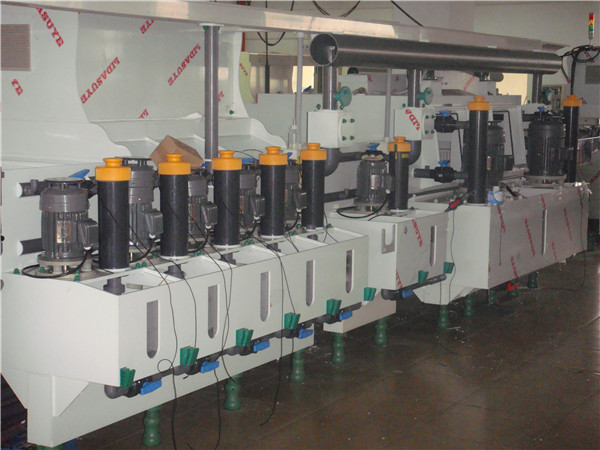Dec . 05, 2024 14:12 Back to list
plastic pipe fittings
Understanding Plastic Pipe Fittings A Comprehensive Overview
Plastic pipe fittings have become an integral part of modern plumbing and construction projects. Their unique properties and advantages over traditional materials like metal or ceramic make them increasingly popular among both professionals and DIY enthusiasts. This article explores the various types of plastic pipe fittings, their applications, benefits, and considerations for use.
Types of Plastic Pipe Fittings
Plastic pipe fittings are available in various forms, designed to connect pipes at different angles or to branch off into additional pipes. The most common types include
1. Elbows Used to change the direction of the flow, elbows can be at angles of 45 or 90 degrees. They are essential in navigating around obstacles in a plumbing setup.
2. Tees These fittings allow a single pipe to split into two, creating a T-shape. Tees are useful for branching off to other areas.
3. Couplings Couplings join two pipes of the same diameter, typically used to connect longer sections of piping or to repair a pipe.
4. Adapters These fittings are used to connect pipes of different sizes or materials, enabling versatility in plumbing systems.
5. Caps and Plugs Used to terminate the end of a pipe, caps cover the opening, while plugs insert into the pipe.
6. Reducers These fittings allow for a gradual change in pipe diameter, helping in applications where flow changes need to be accommodated.
Materials Used in Plastic Pipe Fittings
Plastic pipe fittings are primarily made from materials such as PVC (Polyvinyl Chloride), CPVC (Chlorinated Polyvinyl Chloride), PEX (Cross-Linked Polyethylene), and ABS (Acrylonitrile Butadiene Styrene)
. Each material offers distinct advantages- PVC is widely used for plumbing and drainage systems due to its excellent resistance to corrosion and chemicals. It is lightweight and easy to install.
- CPVC can withstand higher temperatures than PVC, making it ideal for hot water applications.
- PEX is flexible and can expand, reducing the chances of bursting in freezing temperatures. It is often used in residential plumbing for water supply lines.
plastic pipe fittings

- ABS is known for its strength and impact resistance, commonly used in drainage, waste, and vent systems.
Advantages of Plastic Pipe Fittings
1. Corrosion Resistance Unlike metal fittings, plastic is not susceptible to rust or corrosion, extending the lifespan of plumbing systems.
2. Lightweight Plastic fittings are significantly lighter than their metal counterparts, making transportation and installation easier and reducing labor costs.
3. Cost-Effectiveness Generally, plastic pipe fittings are more affordable than metal fittings, making them an attractive option for budget-conscious projects.
4. Ease of Installation Many plastic fittings can be easily glued or connected with simple tools, allowing for quicker installation times.
5. Versatility Plastic fittings can be used in various applications, including residential plumbing, irrigation systems, and industrial processes.
Considerations for Use
While plastic pipe fittings offer numerous benefits, there are considerations to keep in mind
- Temperature Limitations Some plastic materials may not perform well at high temperatures, making it crucial to select the right material for specific applications.
- UV Exposure Not all plastic fittings are resistant to UV rays. If used outdoors, ensure they are UV stabilized or protected to prevent degradation.
- Chemical Compatibility Different plastics have varying tolerances to chemicals. It’s vital to check compatibility with substances that may come in contact with the pipes.
- Local Codes and Regulations Always adhere to local plumbing codes and standards, which can dictate specific materials and practices.
Conclusion
Plastic pipe fittings represent a modern solution for various piping needs, providing a reliable, cost-effective, and versatile option for both residential and commercial use. Their ease of installation, lightweight nature, and resistance to corrosion make them an attractive choice in plumbing and construction projects. As with any construction material, understanding their properties and limitations will help ensure successful and durable installations. By choosing the right type of plastic fittings for a specific application, you can enhance the efficiency and longevity of plumbing systems. As technology advances, we can expect even more innovations in plastic fittings, paving the way for more sustainable and efficient solutions in the industry.
-
HDPE Natural Sheet: Durable, Food-Grade & Versatile Plastic Solutions
NewsAug.27,2025
-
Durable Glossy PVC Rigid Sheet | Premium High-Shine Panels
NewsAug.26,2025
-
Durable PP Rigid Sheet: Lightweight, Chemical Resistant Solutions
NewsAug.21,2025
-
PVC Grey Sheet for Extraction: Chemical Resistant & Durable
NewsAug.19,2025
-
Durable PVC Pipe Fittings for Plumbing & Irrigation Needs
NewsAug.18,2025
-
HDPE Steel Belt Reinforced Spiral Corrugated Pipe | High Strength
NewsAug.17,2025

